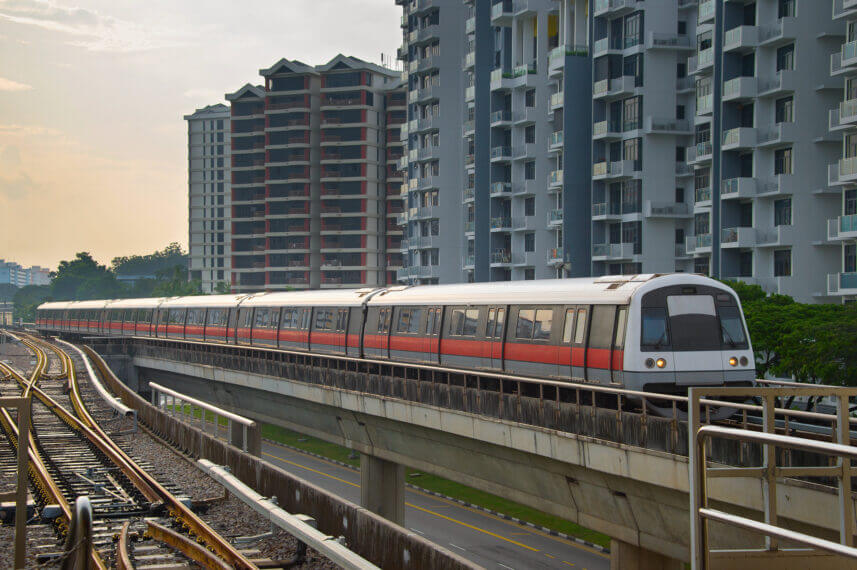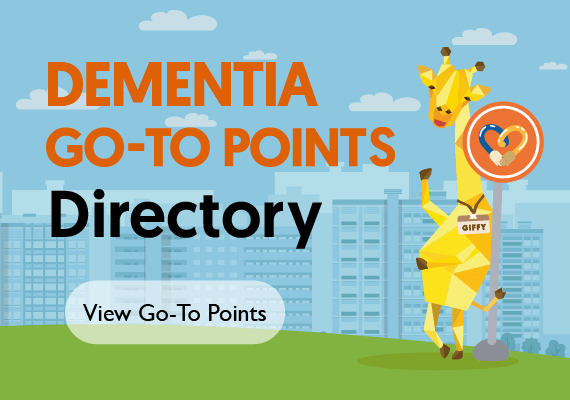Playback speed:
Public transportation is a common mode of transport for people in Singapore. This does not change even with the onset of dementia. Having easy access to transportation enables persons living with dementia to stay connected to their friends, families, and community. It also provides access to healthcare service locations, such as the hospital.
As dementia progresses, navigating the complex public transport network may become more complicated for persons living with dementia. While one way to overcome this challenge is to arrange your own transportation for your loved one, it is also equally important to empower persons living with dementia to live independently for as long as they are able to do so. It is hence essential for caregivers to be aware of transportation options available in their local community, and ways they can make travel on public transport a safer experience for their loved one living with dementia.
Challenges Faced by Persons Living With Dementia
Dementia can make it challenging for your loved one to access transport. Some reasons are:
- Difficulty remembering transport routes
- Disorientation of their sense of time and place
- Misplacing items whilst travelling (for e.g., ezlink card, bag)
- Decreased judgement, resulting in difficulty planning and organising transport
- Difficulty communicating their desired travel route to transport operators
- Changes in mood or behaviour whilst using public transport
A person living with dementia should be aided by a caregiver as they may not feel comfortable travelling alone. Not allowing a person living with dementia to go out may make them socially isolated and put them at risk of feeling depressed.
Helpful Tips for Safely Travelling on Public Transport With Your Loved Ones
1. Carefully plan the route before they make the journey
2. Allow adequate time for travel
3. Take note of situations that may make your loved one feel uncomfortable
4. Bring along a friend or relative for extra support if needed
5. Consider alternative transportation options
6. Prepare your loved one and yourself for the situation in which they are lost
Initiatives by Local Transport Providers
In order to make our public transportation systems more dementia-friendly and inclusive for persons with dementia, our local transport providers have rolled out a number of notable initiatives to aid persons with dementia safely navigate the public transport network. These are helpful resources for caregivers to tap on.
Dementia Go-To Points
Go-To SMRT
Source: SMRT Corporation
This video showcases the Go-To initiative by SMRT. In an effort to make our public transport facilities more dementia-inclusive, front-line staff have been trained to assist seniors and commuters with special needs and dementia. This initiative covers Dementia Go-To-Points, WeCare Rooms.
The Go-To Initiative was launched in April 2021 throughout the SMRT network to provide first aid, help in locating missing children or elders, and other forms of assistance at its bus interchange and train station premises. As part of this initiative, MRT stations and bus interchanges have been designated as Dementia Go-To Points (GTPs). These Go-to Points serve as ‘safe return’ points where the public can bring persons living with dementia who are lost to find their way or find their caregivers. GTPs also serve as places where people can access information and resources about dementia, and link people to dementia-related services
Front-line staff at these Go-to Points have been trained to handle situations involving persons from certain groups, including seniors, those with special needs and disabilities, and persons living with dementia. They can also assist in providing first aid, if necessary. In the event your loved ones goes missing, you can also go to the nearest Go-to Point to see if others have brought your loved one there. Go-to Points serve as ‘safe return points’ where members of the public can bring lost persons living with dementia. The staff at Go-to Points are trained to identify and aid persons living with dementia to find their way or reunite with caregivers.
To check if the stations in your planned commute are Go-To points, you can search them using the directory of listed Go-To Points. Alternatively, you can click the buttons below to find the lists of Go-To Points sorted by region.
WeCare Rooms
If your loved one appears tired while travelling through major bus interchanges, look for the reserved seating in bus queues at major bus interchanges and priority boarding lanes at train stations, which may help make the ride more comfortable if your loved one has mobility difficulties or is using a wheelchair.
If your loved one seems distressed while traveling through stations, you may want to take them to a quieter WeCare room. Expand the list below to see which stations are equipped with WeCare rooms.
- Ang Mo Kio
- Aljunied
- Bugis
- Buona Vista
- Bishan
- Canberra
- Jurong
- Yishun
- Simei
- Novena
- Kent Ridge
- Kembangan
- Lakeside
- Lavender
- Paya Lebar
- Queenstown
- Redhill
- Yishun Integrated Transport Hub
- Woodlands Integrated Transport Hub
- Bukit Panjang Transport Hub
- Sembawang Bus Interchange
- Choa Chu Kang Bus Interchange
'Find Your Way' Initiative
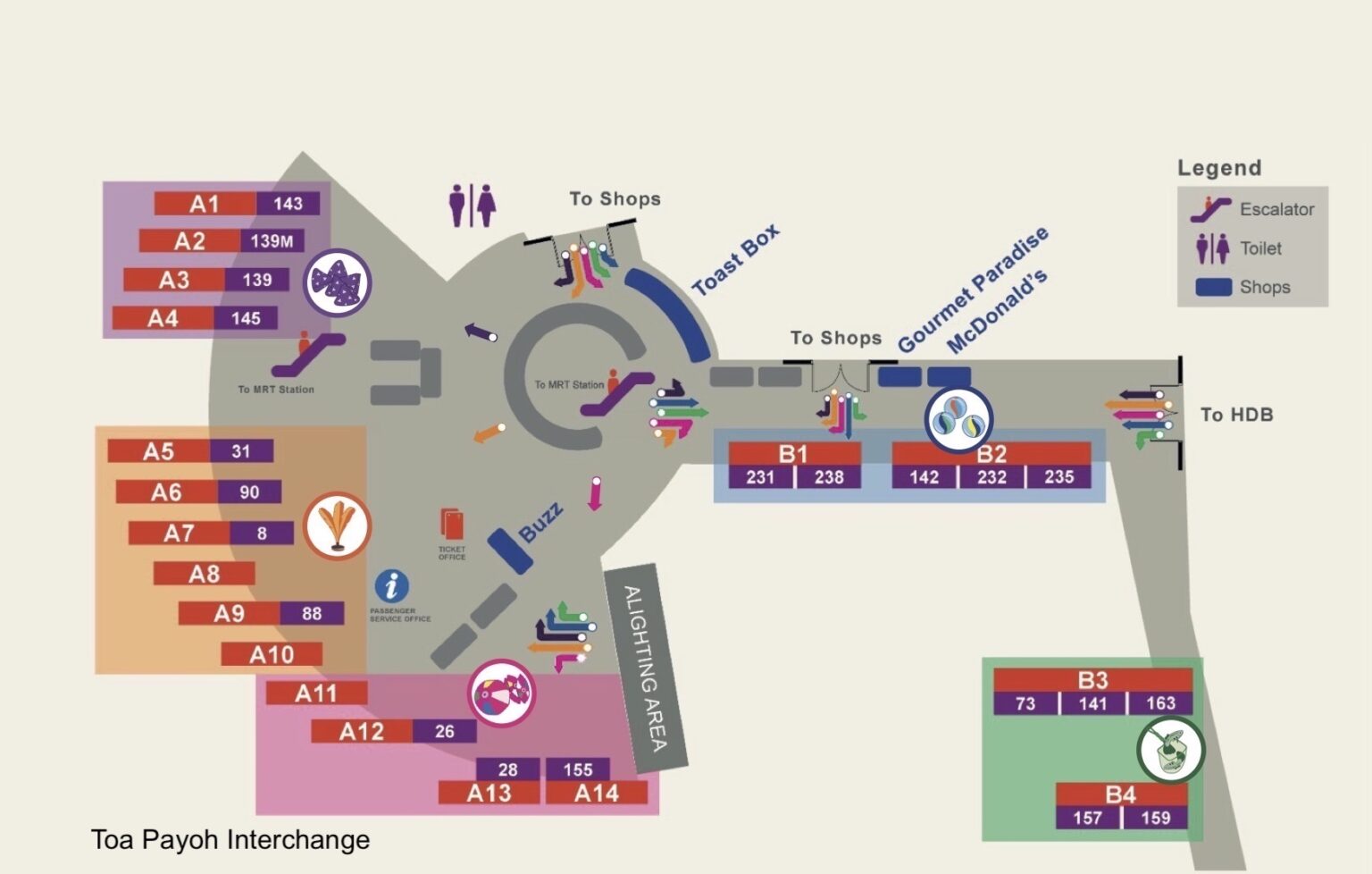
The Find Your Way initiative makes use of the Reminiscence approach in aiding persons with dementia to easily navigate bus interchanges and MRT stations. This initiative was co-developed with persons living with dementia, who were consulted on the mural designs, placement and colour coding of bus berths.
These murals use familiar imagery from childhood games or activities for seniors to mark out walkways leading to different exits. Your loved one with dementia can easily identify the bus berth to take their service using the corresponding mural and colour, together with directional floor signs. Certain neighbourhoods, and stations under the Find Your Way initiative have wayfinding murals. For instance, if your loved one is headed towards Toa Payoh, the bus interchange is ‘zoned’ with corresponding nostalgic murals as pictured on the left.
Image source: SBS Transit
'Find Your Way' Initiative
“Find Your Way” is an initiative by SBS Transit Ltd and Dementia Singapore to help persons living with dementia find their way around bus interchanges and MRT stations with greater ease and confidence.
In the first of a two-part series, journey with Emily Ong, a prominent dementia advocate and person living with dementia, as she finds her way around Ang Mo Kio Bus Interchange using strategically installed murals.
Source: Dementia Singapore
In this part of a two-part series, navigate around Kovan MRT with Anjang, an advocate for dementia and a person living with dementia. Can you identify the mural he is relying on to bring him to his loved one?
Source: Dementia Singapore
'May I Have a Seat Please' Initiative
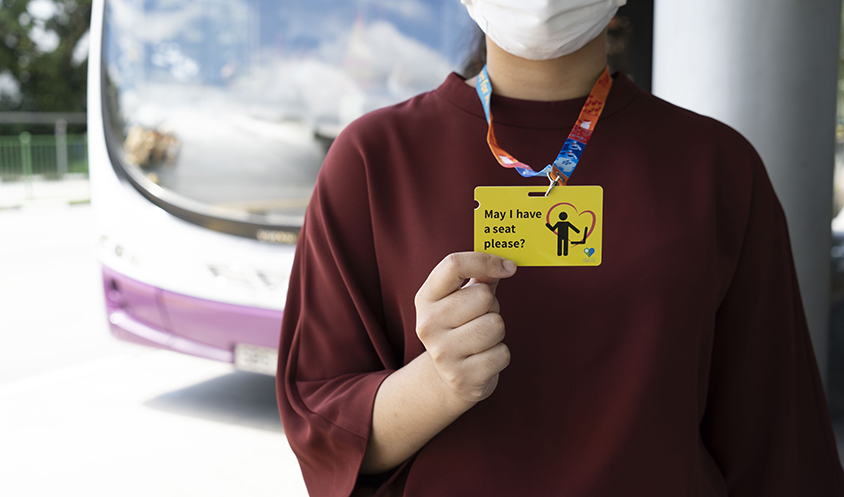
The May I Have a Seat Please initiative presented by the Caring SG Commuters Committee aims to help commuters with invisible medical conditions alert fellow commuters that they would like a seat on public transport.
Persons living with dementia may obtain a specially-designed card and lanyard from the Passenger Service Centres at MRT stations, bus interchanges or TransitLink Ticket Offices.
Image source: Ministry of Transport
Prepare your loved one and yourself for when they are lost
CARA Mobile Application
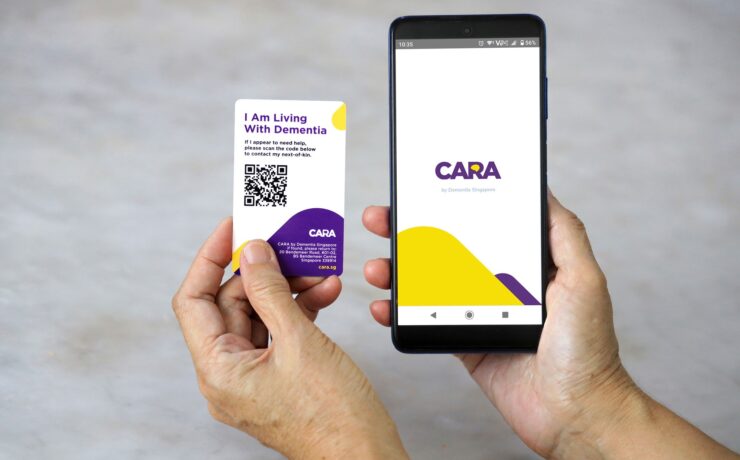
Before your loved one takes public transportation, you can make copies of their IC and other necessary identification documents and keep the original copy on your person. Having the person carry identification (such as the CARA Membership Card) can help others know how to contact you or return your loved one home in case they are lost.
Image Source: CARA
Family Account on the EZ-Link Mobile Application
For persons living with dementia who still prefer to move around on their own on the public transport system, caregivers may consider a combination of technologies to support their social engagements while monitoring their transit movements.
EZ-Link has developed the Family Account feature on the EZ-Link app which enables caregivers to track dependents’ detailed transit history locations on SimplyGo EZ-Link cards that have been paired with the Family Account.
This can be helpful to narrow down their loved ones’ search vicinity of their loved ones should the need arise. In the event you lose sight of your loved one or get separated from them, try to stay calm and track their last known location. You can also top up their card remotely through the Family Account feature.
If your loved one uses a regular EZ-Link card and does not have a smartphone, you can also view their transit history after adding their EZ-Link card to your own account. Simply “Add card as a new card” on the SimplyGo app using the 16-digit CAN ID found on the back of your loved one’s EZ-Link card. You can upgrade their EZ-Link card to SimplyGo EZ-Link via any ticketing machine at bus interchanges or MRT stations.
Considering Alternative Transport Options
If you need to travel during peak hours, or if taking public transport might be difficult for you and your loved one, you might want to consider alternative transport options such as GrabAssist.
GrabAssist drivers are trained to assist passengers with mobility difficulties, such as safely dismounting a person from a wheelchair to the car seat. GrabAssist Plus is a new initiative launched by Grab that allows passengers to travel without dismounting from their wheelchairs, as the vehicles are equipped with ramp access. GrabAssist Plus trips are only available from 8am-8pm. You can find these services under the ‘Value-Added’ Tab when booking your trip on the app.
Tell us how we can improve?
- (2021, April 26). SMRT Media Release – SMRT demonstrates firm commitment to serve community through Go-To SMRT initiative.SMRT.
https://www.smrt.com.sg/Announcements/articleid/1321. - Yong, C. (2021, April 26). Smrt Mrt stations and bus interchanges to be turned into care centres. The Straits Times. https://www.straitstimes.com/singapore/smrt-to-train-staff-so-mrt-stations-and-bus-interchanges-can-be-first-place-of-call-for.
- (2022, April 1). SMRT Media Release – SMRT wins UITP Award for Go-To initiative. SMRT.
http://blog.smrt.com.sg/smrt-wins-uitp-award-for-go-to-initiative/ - (2022, February 27). SMRT Media Release – Media Release – SMRT and AIC Enhance Dementia-Friendly Transport in Singapore. SMRT.
https://www.smrt.com.sg/Announcements/articleid/smrt-and-aic-enhance-dementia-friendly-transport-in-singapore - Tan, A. (2022, February 27). Help for those with dementia who appear lost at all SMRT train stations by year-end. The Straits Times.
https://www.straitstimes.com/singapore/transport/all-smrt-train-stations-will-be-able-by-year-end-to-help-those-with-dementia-who-appear-lost - (2019, October 29). 5 Ways Yishun Integrated Transport Hub is Senior and Dementia friendly. AIC.
https://www.aic-blog.com/5-ways-yishun-integrated-transport-hub-senior-and-dementia-friendly - (2019, 30 April) Meet the Designers Of The “May I Have A Seat Please?” Lanyard. Caring SG Commuters Committee.
https://www.caringcommuters.gov.sg/in-the-spotlight/meet-the-designers-of-the-may-i-have-a-seat-please-lanyard

